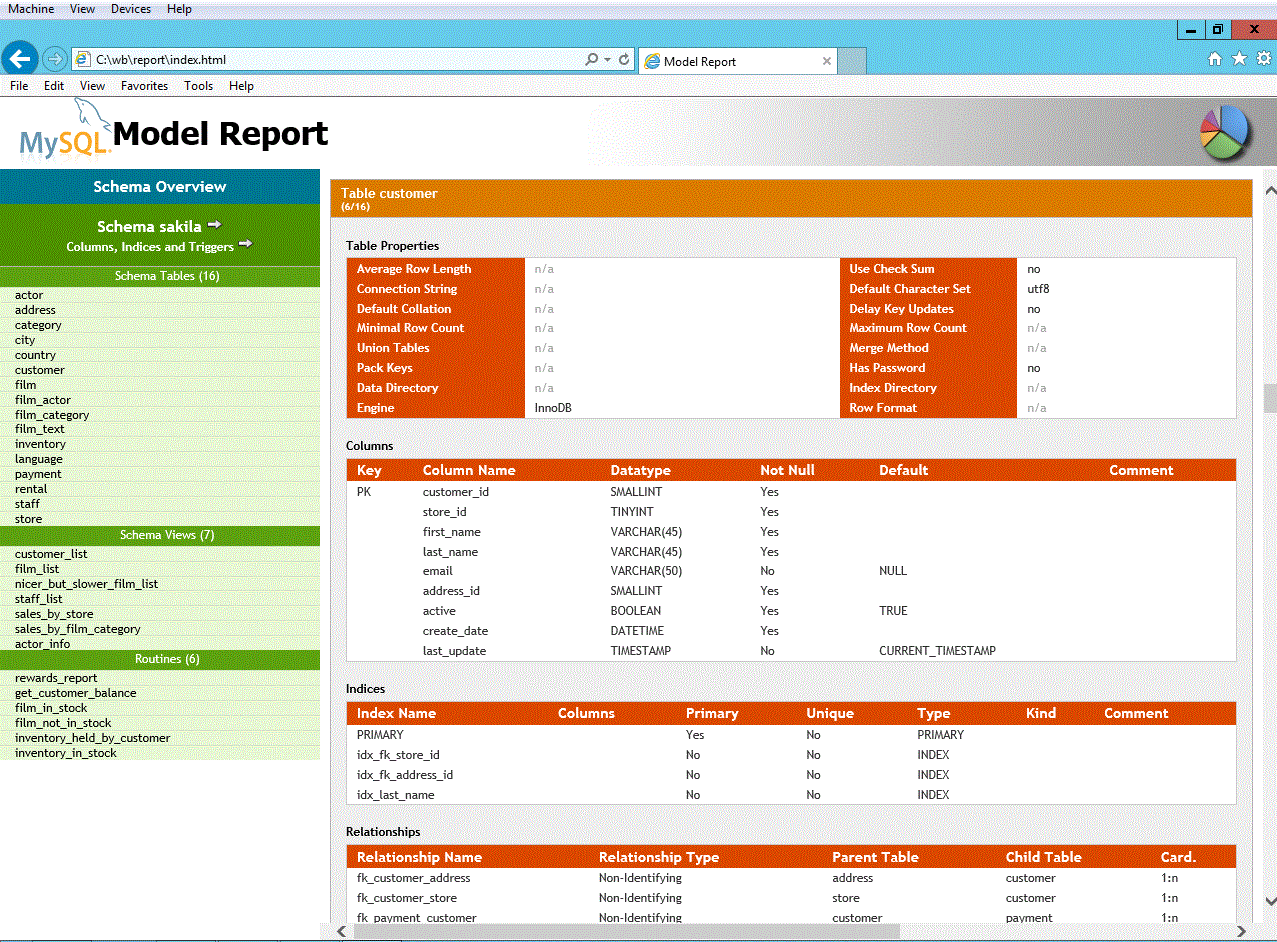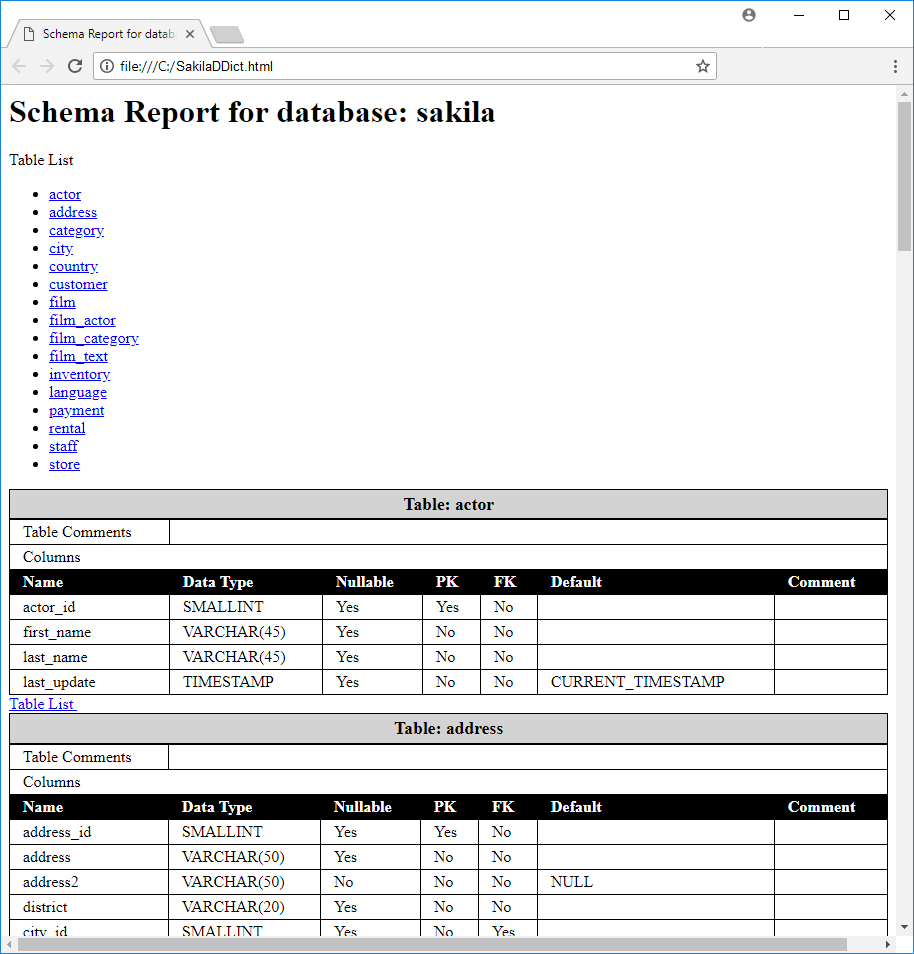

What application are you importing from (in this case MySQL Workbench).This launches wizard which will guide you through the necessary options like: To import MySQL Workbench model to Skipper open the Skipper Main Menu, select Create or import new and then select Import external model. All that you need to do is just save your model the usual way in MySQL Workbench, and everything else will be taken care of by Skipper. Main focus of this comparison lies in the ORM framework support and ORM oriented design.
MYSQL WORKBENCH EXPORT DATABASE HOW TO
That's all for today! You have learned how to import an existing database schema into Vertabelo and organize your model.Read the comparison study if you are more interested about differences between the Skipper and MySQL Workbench. Ready to Create Database Models From SQL? You may color tables, views, and subject areas.

To do so, click on the element and scroll to the Format section of the Properties panel on the right. Instead of using subject areas, you may also use different colors to group elements of a model. Then, click anywhere in the model to create a note. To add a new note, either click the Add new note button in the menu bar at the top or press 6 on your keyboard.

You may add notes to your diagram to document certain parts of the model or create to-do lists. You see this creates a copy of the original table. This results in fewer overlapping lines and makes the diagram more readable.Ĭreate shortcut tables by right-clicking on a table name in the Model structure panel on the left. Table ShortcutsĪ shortcut table is a copy of a table created to reduce complexity. Then, click and hold the left button on your mouse and drag the cursor to draw a box around all of the elements you want in your area.įor example, we may create a Purchase area to group the tables related to purchases. To add a new area, either click the Add new area button in the menu bar at the top or press 7 on your keyboard. This feature allows you to group model elements according to their functions. Subject areas are handy if you have a huge database with many tables. Let’s take a look at some of the available options. Once you have imported your model, you may use Vertabelo to organize the tables. How to Organize the Imported Model Using Vertabelo Features The imported model is visible in the diagram area. You see a window informing you that the import has finished. Alternatively, copy and paste the SQL script instead of uploading it from your computer. Once the file is uploaded, verify the DDL script and modify it if needed. You may add the imported objects to the current model or overwrite the existing model. Click Browse to add a file from your computer. Note that there is also an option to import an XML file generated by Vertabelo Reverse Engineering Tool or exported from Vertabelo.Ī new window appears. You see the imported model in the diagram area.Īlternatively, open the model and click on the three-dot menu at the top of the screen. After choosing the file, click Import SQL. Scroll down to the Content section and choose From SQL.Ĭlick Browse to choose a file from your computer. Next, type the name of the model and choose the database engine. Click the Create button next to Physical data model. Then, on the menu bar at the top, click this icon to create a new document. You may import the SQL file while creating a new document. Let's see how to do this with the SQL script exported from MySQL Workbench. How to Create a Database Model From an SQL DDL File in VertabeloĪnother way is to import a model from an SQL DDL file in Vertabelo. Later, you may import the XML file into Vertabelo. Use this tool to connect to a database and export the model data to an XML file. One is to use the Vertabelo Reverse Engineering Tool. There are various ways to import an existing database schema into Vertabelo. How to Import an Existing Database Schema Into Vertabelo

If everything goes well, you see the message “Export completed”. When everything is ready, click Start Export at the bottom. In Export Options, you may choose to export each table to a separate file or all selected objects into a single file. Next, choose the schema to be exported (in our example, it is demo) and the objects to export (here, we have chosen all tables). Open MySQL Workbench, then select Server -> Data Export from the menu at the top. How to Export a DDL File From MySQL Workbenchįirst, let's see how to export an existing database. We also take a look at other ways to import an existing database schema into Vertabelo and organize existing tables. In this article, you learn how to export a DDL file from MySQL Workbench and import it into our modeling tool. Do you have an existing database model you would like to work with in Vertabelo ? If so, you've come to the right place!


 0 kommentar(er)
0 kommentar(er)
